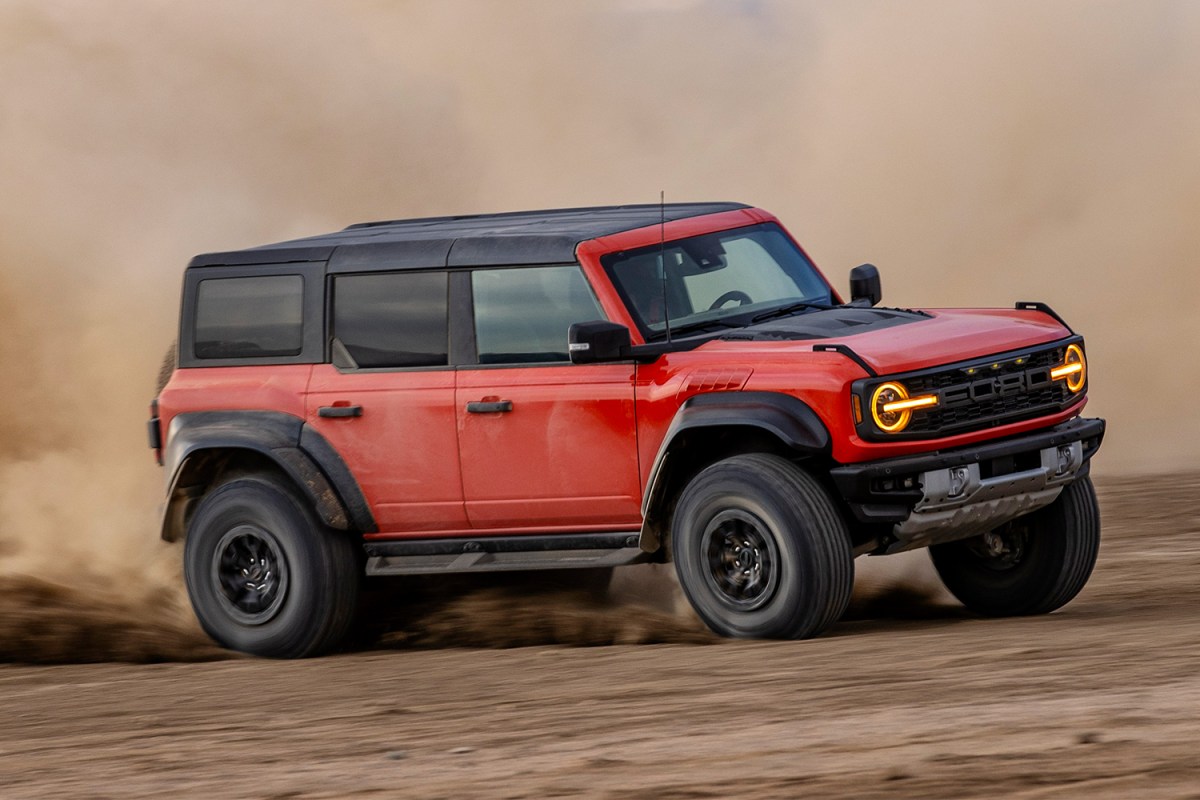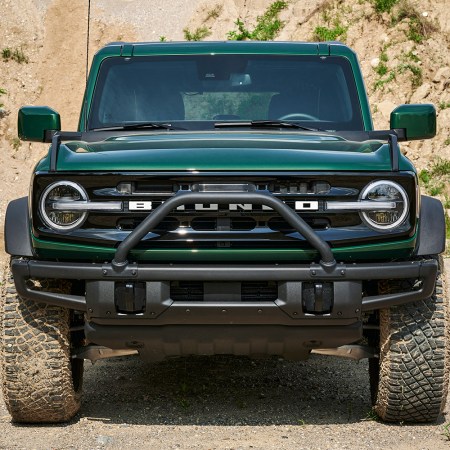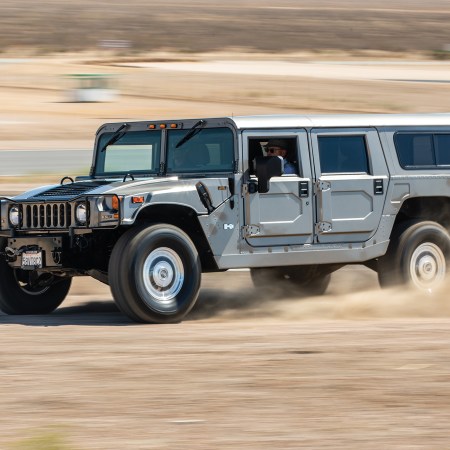It’s pretty hard to miss a Ford Bronco Raptor barreling down the road, whether towering among lesser SUVs on your local highway or spitting dirt at your nearest rutted, gravely ascent.
This is large, loud and brash vehicular excess staring you in the race with “F-O-R-D” emblazoned across the facade. If you had absolutely any doubt about the Raptor being the most capable, grandiose version of the latest Bronco generation, then the standard 37-inch BF Goodrich all-terrain rubber at each corner should assuage any last remaining concerns.
This Bronco is the most imposing villain of Ford’s expanding Raptor lineup, with all sorts of upgrades from its base model, including a twin-turbocharged 3.0-liter V6 pushing 418 horsepower to those monstrous tires. While it’s not the biggest engine in the Raptor arsenal (that award goes to the F-150), it’s plenty menacing and rumbles with authority even in two-wheel drive, the “normal” exhaust mode and regular traffic.
With all of this in mind, it really begs the question of who actually needs this ostentatious bully of the backroads. After a few days spent with one, I’m not sure I have the answer, but I can tell you an oversized grin never left my face while trying to figure it out.
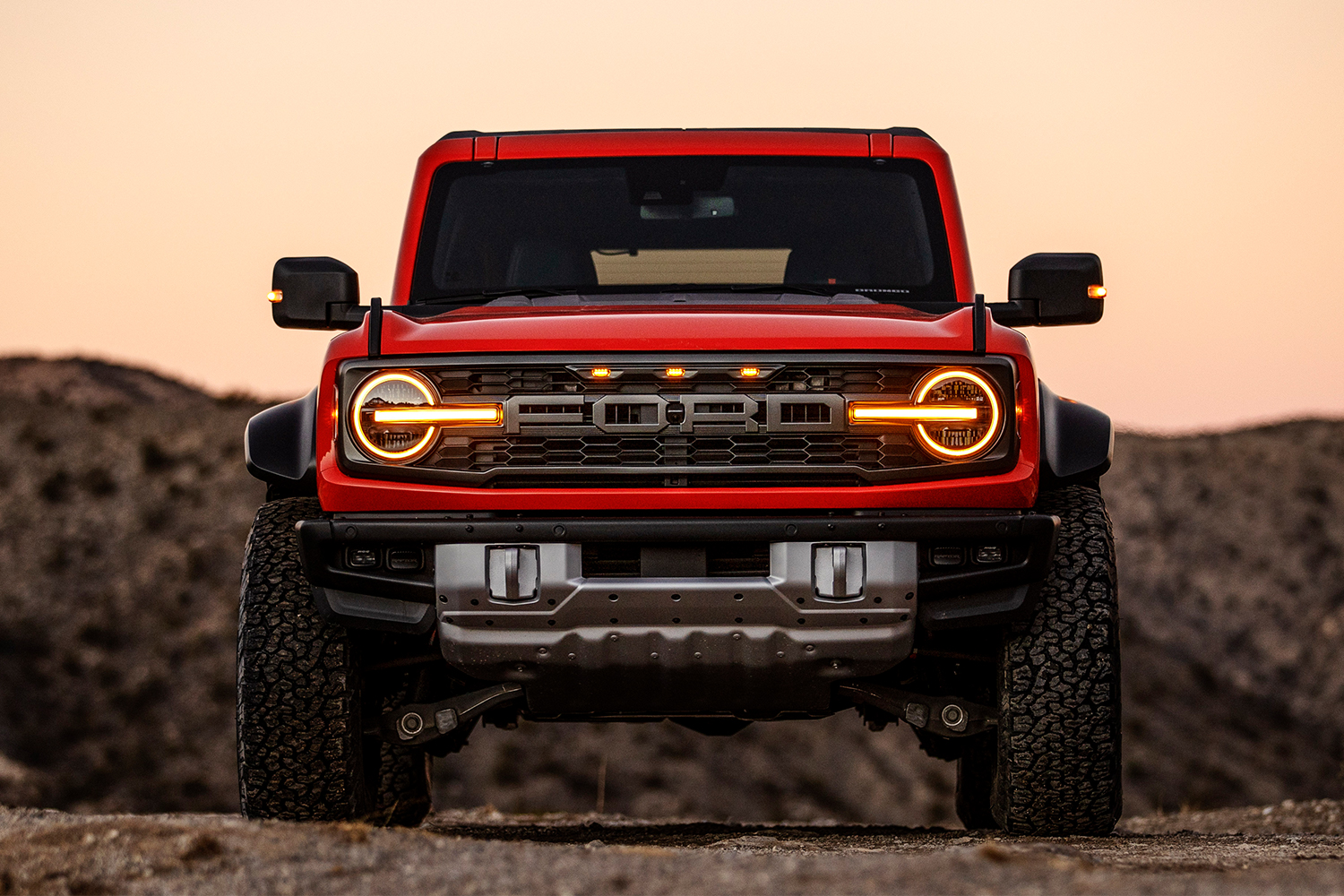
Surprisingly Driveable
Unless you’re a professional off-road racer or live in an unpaved society, the Bronco Raptor is going to spend most of its time driving civilized roads at normal speeds. The good news is, unlike other dirt-road-tuned models, it’s almost driveable in regular life.
Ford did a good job balancing how a 5,700-pound beast of a machine moves and rocks through normal traffic, and at times you almost forget you’re driving an 85-inch wide, 191-inch long SUV (that’s Hummer H1 territory for those keeping score at home). However, it’s the kind of driveable that’s fine for short trips, but not necessarily comfortable for longer ones. I was damn near exhausted after 90 minutes spent behind the wheel primarily because a vehicle of this size and capacity demands a lot of mental and physical stamina. You have to constantly be aware of where you are, who’s around you and where the next fun off-road environment could be.
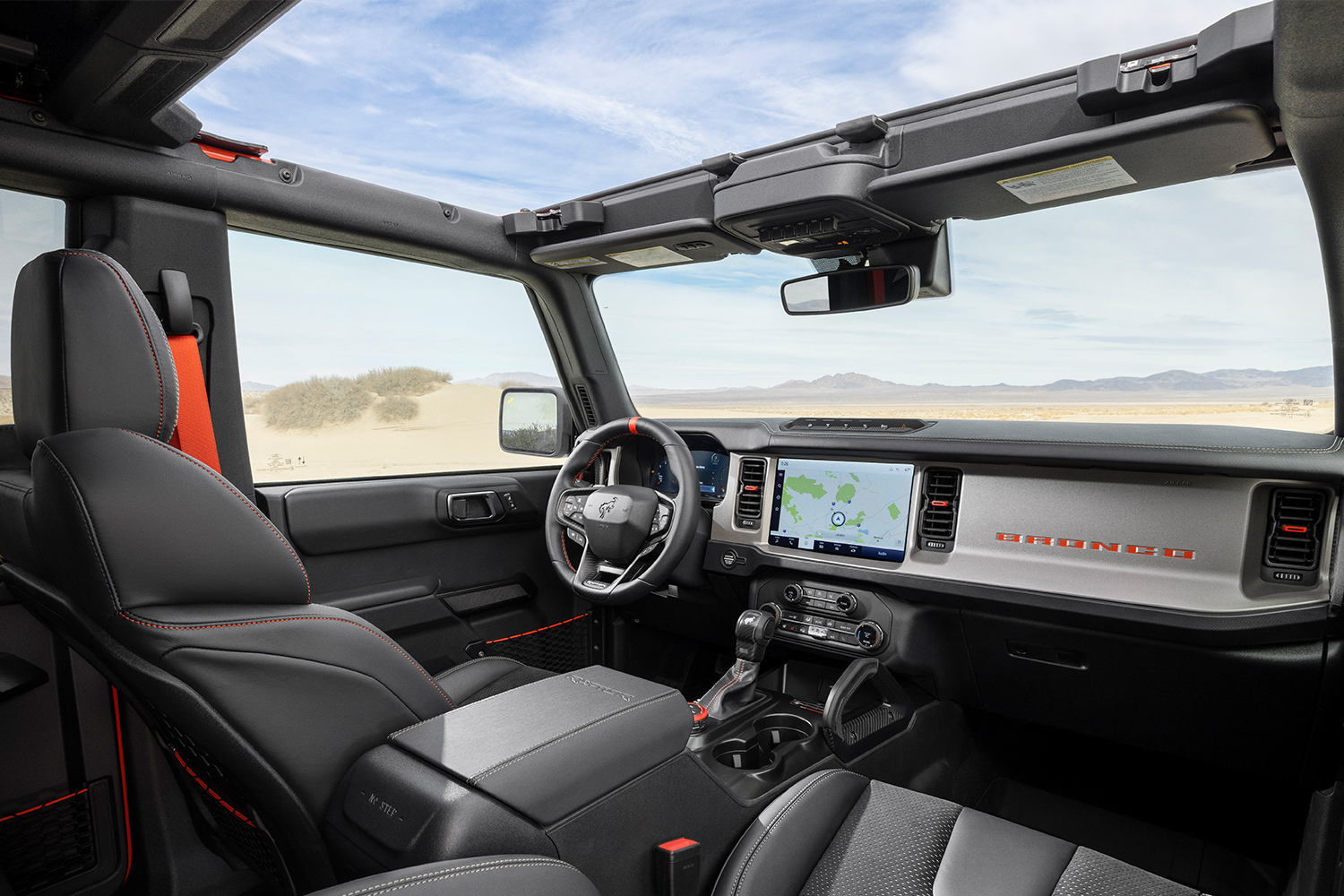
Bulked Up Bronco
One look at the Bronco Raptor and even automotive neophytes will understand this beast is built for more than pavement, but there’s more to the SUV’s capabilities than the beefy exterior.
An array of off-road-mode switches and toggles are neatly laid out across the top of the dash, almost teasing you to push it just that little bit further. With at least a dozen different differential, power and drive combinations, there’s almost no environment it hasn’t been equipped to handle, the only requirement being a bit of patience and education from the pilot behind the wheel.
Review: Facing Almost Certain Doom in the Jeep Wrangler Rubicon 392
Don’t look for logic in the over-muscled, V8-powered WranglerOn an especially warm morning in the foothills of a particularly notorious, unpaved mountain pass, I wanted to see all of this in action, and the Bronco had no issues churning up slushy, rutted, almost foot-deep snow ascending to a narrow summit. The standard G.O.A.T. (Goes Over Any Type of Terrain) Mode dial that comes on all Broncos is amped up for this edition, and makes it easy to optimize suspension, braking and traction for wherever you find yourself. You get two additional drive modes, including “Rock Crawl” and “Baja,” while Ford dropped the “Eco” mode from the Raptor because, really, you’re not concerned about efficiency here. All seven modes are connected to a paired visual in the instrument cluster in a new “Performance View” option, which was designed by former video game developers.
You can drive the Bronco Raptor off the lot with the confidence you’ll conquer almost anything anywhere your travels may take you. But if you add a winch and pick up a set of MaxTrax yourself, then you’ll really have all you need. The day’s experience had me hankering for a trip to my local desert playground to do some rock crawling, letting both locking differentials do their magic to really stretch the capabilities of this rig.
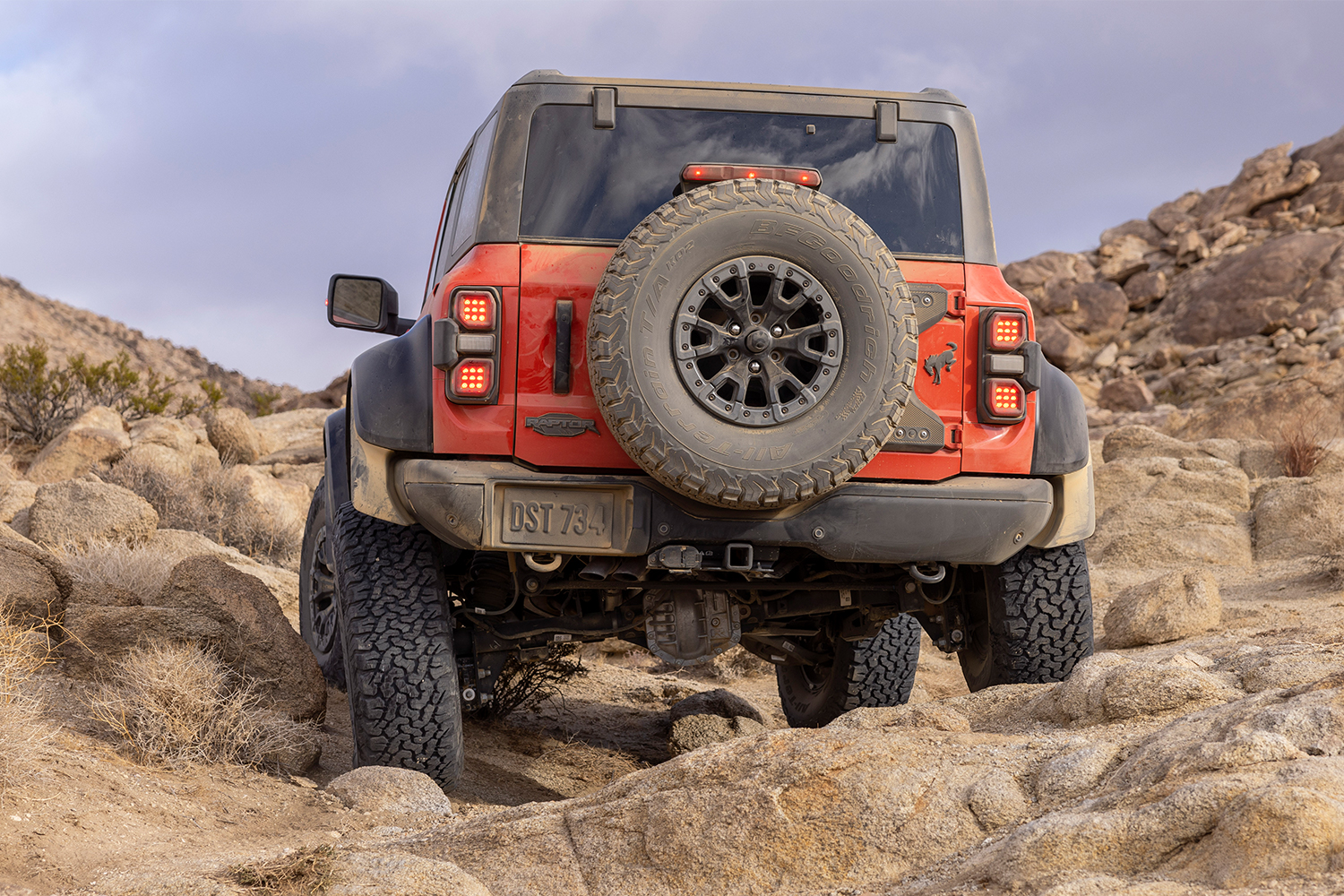
Reality of the Raptor
If you take off the dusty, Raptor Orange-accented glasses and try to understand this vehicle as a whole, there’s a very narrow market for it. At 15 combined mpg on a good day (at least 4-5 mpg less than more civilized Broncos in the lineup), it’s certainly not economical, and it’s downright comical to see its girth swallow up an entire standard parking space. There are too many qualifiers to make this the daily driver of any reasonable person’s life.
What you do get for the $76,580 base sticker (up from $74,820 on my 2022 tester) is that unquantifiable and undeniable fun factor, something that was missing from the Toyota 4Runner TRD PRO I drove in December. Sure, you could get into the TRD Pro for over $20,000 less (comparing base models), but that SUV felt more like an elevated off-road cruiser whereas the Bronco Raptor is like the rowdy party animal everyone clears the way for upon arrival.
You could also opt for a Jeep Wrangler Rubicon or the maxed-out Wrangler 392, but the decision ultimately comes down to personal need (or brand loyalty) as the capability is near similar.
I’ll leave you with this parting thought: The party animal is the one person everyone remembers, and I can tell you definitively that I will remember my time with the Ford Bronco Raptor much more than I will the Toyota.
This article was featured in the InsideHook newsletter. Sign up now.
